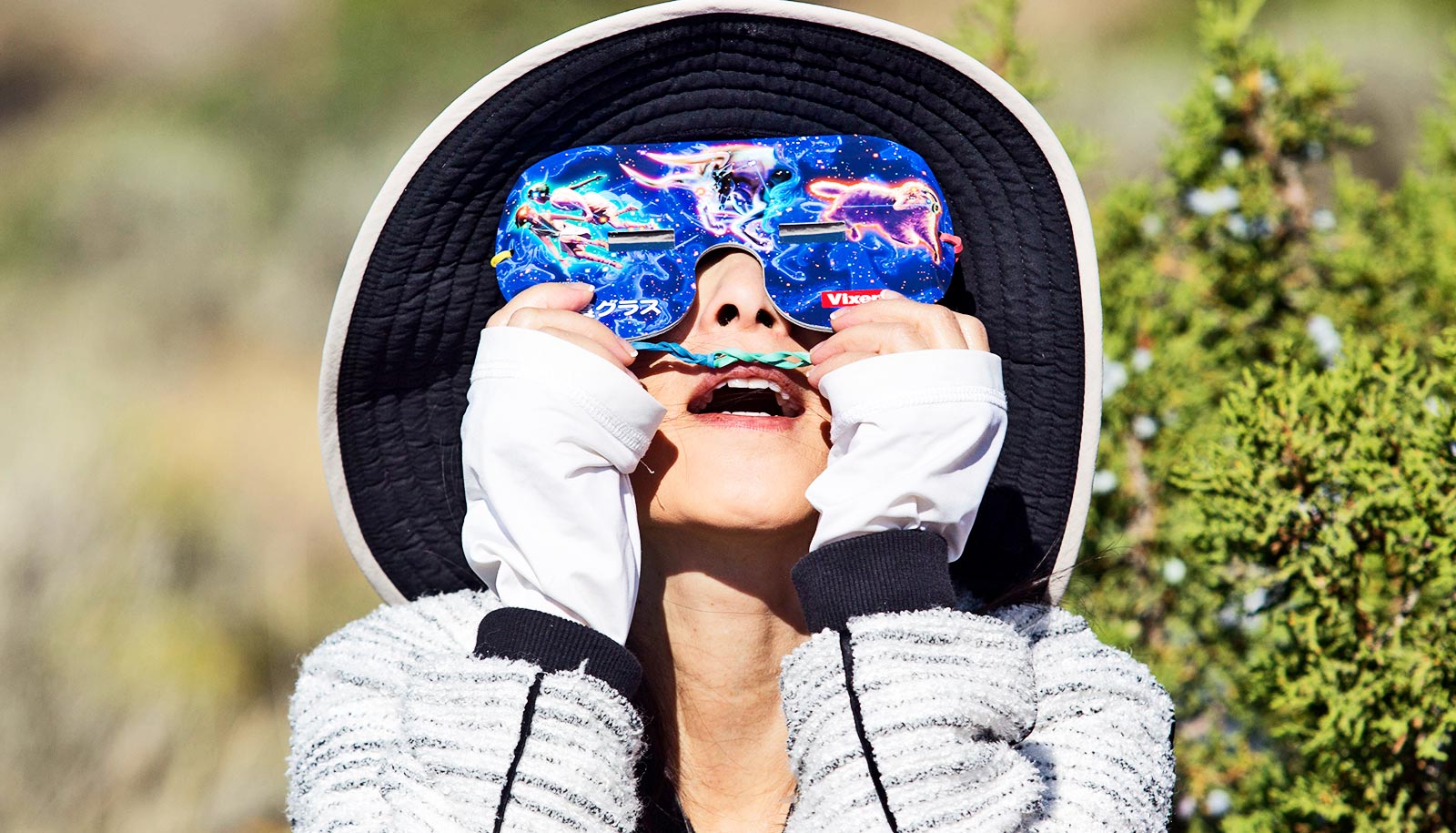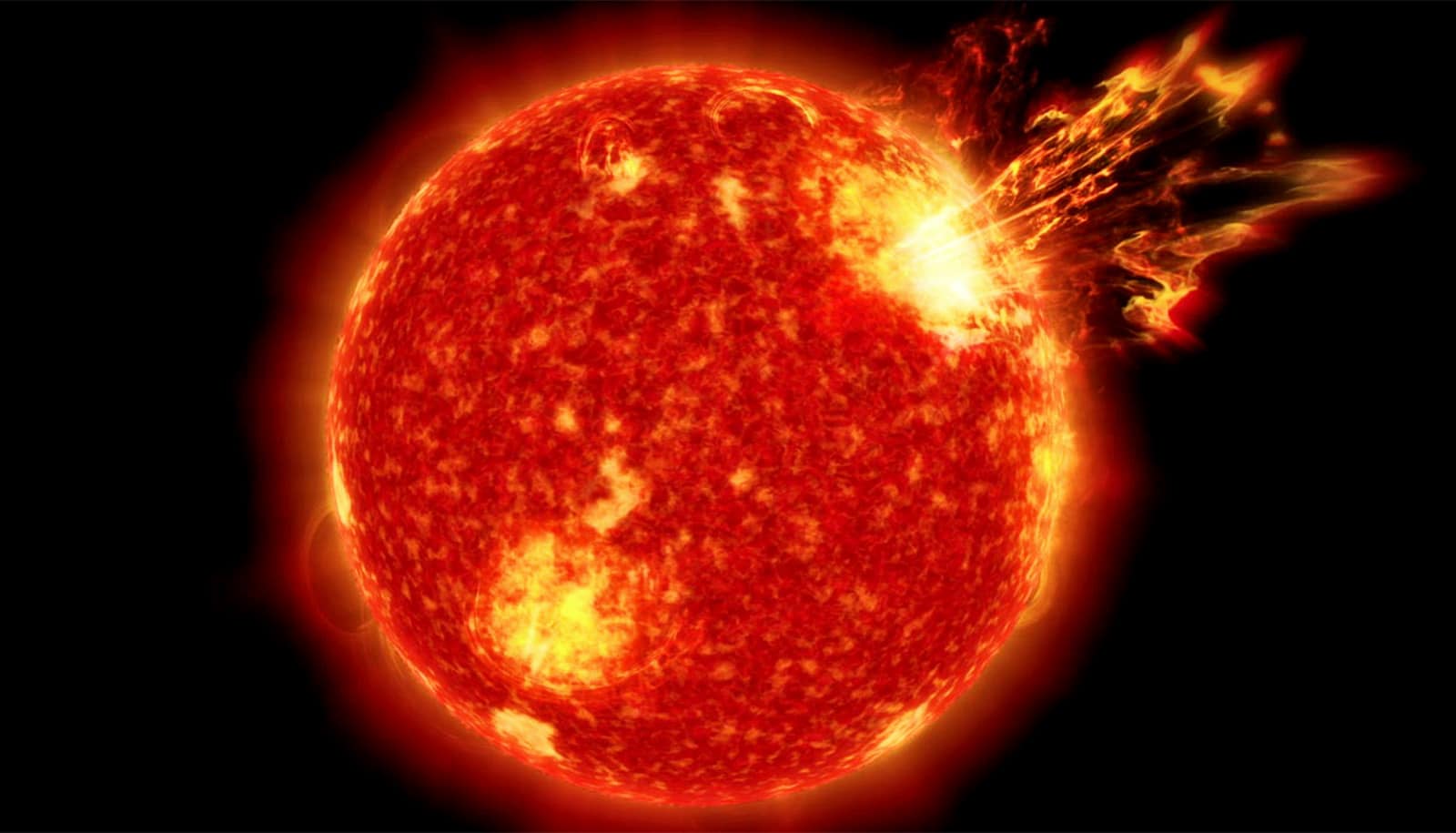
A woman reacts as she watches the eclipse on Menan Butte August 21, 2017 in Menan, Idaho. (Credit: Natalie Behring/Getty Images )
What to expect during April’s solar eclipse
On April 8, millions of Americans will be watching the last total solar eclipse visible in the US until 2044. Here's what to expect.
Just seven years after the last total solar eclipse in the United States, millions of Americans will once again be in the path of daytime darkness on April 8.
It was just back in August 2017 when Americans needed special light-blocking eyewear to view a total solar eclipse that cut a swath across the country. Dubbed “The Great American Eclipse,” its “zone of totality”—the shadowed region where the sun is completely blocked by the moon—stretched in a narrow band from Oregon to South Carolina.
On April 8, the moon and the sun will again do their sky-darkening celestial dance. This time, the band of totality stretches from Mazatlan on Mexico’s west coast and moves northeast through Texas as part of a sweeping cross-country arc ending in Newfoundland, Canada. Major cities in its path include San Antonio, Dallas, Little Rock, Indianapolis, Cleveland, and Buffalo.
William Blair , an astrophysicist and research professor in the physics and astronomy department at Johns Hopkins University, shares his thoughts on what you can expect:
The post What to expect during April’s solar eclipse appeared first on Futurity .
Is there anything special about this latest total solar eclipse?
Well, for one thing there won’t be another total solar eclipse visible in the US until 2044. But this eclipse will be different from the one in 2017. The moon’s orbit is slightly elliptical. So the angular size of the moon is a little smaller when it’s farther away, and a little bigger when it’s closer.
This year the moon is closer to us than in 2017. The length of the time that you were in shadow in 2017, if you were right on the totality center line, was a little over two minutes. And this time it will be over four minutes long—all because the moon is closer. And the path of totality will be wider as well.
What should we consider if we want to travel to experience totality?
Clouds! [laughter] The difficulty with this one is that the Northeast in April is not known for being spectacularly clear. So it’ll get dark in the totality zone, but whether you can actually see the eclipse or not is just going to depend on the weather . I think a lot of people are heading down south to Texas and Mexico hoping that the weather is a little clearer down that way.
What can we expect here in Baltimore?
It will be another partial eclipse here with some 90% of the sun covered. If you have the special glasses and look at it, you will see the bright disk of the sun with a substantial chunk taken out of it that will change over time. It’ll get to a certain point, maximize, and uncover again. You might see the character of the light change a little bit if it’s clear here. It’s an odd light. The light levels go down, and if the sun’s out, it is still producing crisp shadows. This is in contrast to evening twilight when things kind of soften in terms of the shadows.
Is it worth getting closer to the totality but not all the way in it?
Not really. The amazing thing about an eclipse is that you could be where the sun is 99% covered and it’s not the same as being 100%, when the solar disk is completely covered and you see the corona around the outside. In a 99% eclipse, you still have a piece of the sun that’s uncovered and its light completely dominates so you don’t see the corona. So people who say, “Oh, I’m close to totality—I’m going to stay here” will not experience totality or see the corona.
Tell us more about the corona.
It’s basically the tenuous outer layers of the solar atmosphere. When you see the bright sun, that’s called the photosphere. You can see sunspots and things there. That’s the so-called surface of the sun. (Well, the sun doesn’t have a hard surface like the Earth, but basically, there’s a photosphere where the light escapes and that’s what we see.)
There is a tenuous region of the extended solar atmosphere called the corona, where magnetic fields and high-energy particles come out of the sun and ionize the tenuous gas around the sun. That’s the halo around the sun you can see when the bright disk is completely covered during totality. During totality, you can look at it without glasses and take pictures of it.
It’s pretty amazing, right?
Absolutely spectacular. And not just the eclipse itself, but then just seeing the surroundings get dark in the middle of the day. Sometimes animals and insects and birds and whatnot start to do funny things because they don’t understand what’s going on.
We experienced totality in the Tetons in 2017. You could see the shadow coming and then it sweeps over you and all of a sudden, you’re in the dark. The only other time I experienced it was as a college student in 1972. We were driving across Canada listening on transistor radios to figure out what the weather was going to be like and where we should try to go. It sounded like Nova Scotia had the best chance of being clear, so we kept going east until we got to Nova Scotia, and that’s where we watched it.
Wait, you went up to Nova Scotia to see the total eclipse of the sun? Did Carly Simon write her chart-topping hit You’re So Vain about you?
Sadly, no. I went in a college van, not a Learjet!
Share this article:
This article uses material from the Futurity article, and is licenced under a CC BY-SA 4.0 International License. Images, videos and audio are available under their respective licenses.


